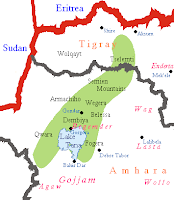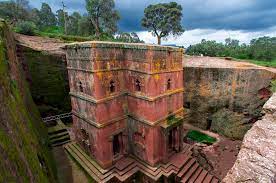The link to yesterday's post is because Eldad ha-Dani's description of the Bnei Moshe and the unusual geography where they lived was repeated in letters supposedly sent to Byzantine Emperor Manuel I Comnenos in 1165 from "John, Christian Sovereign and Lord of Lords." The letter also referred to the Bnei Moshe Jewish group living in his land.
Belief in a Christian sect or nation south and east of Europe was bolstered by the stories of St. Thomas the Apostle traveling to India to evangelize. Europeans happily accepted the idea that Thomas' mission was successful. Reports of Christian inroads into the Mongols and Turks of Central Asia by Nestorian Christianity further supported the idea that (it was hoped) there was a large and influential Christian presence in other parts of the world.
The information in the letter also spoke of John's fabulous wealth. Like many medieval literary works, the legends got copied and conflated with others. For example, John later was given adventures taken right from the tales of Sinbad the Sailor.
Besides the fanciful stories of wealth and the exotic land in which he lived, communication with John from the West was much desired because of the possibility that he would meet up with the Crusades with a large army and help to defeat the Saracens in the Middle East. Pope Alexander II sent a letter to John via Alexander's physician, Philip, on 27 September 1177. There is no record of Philip's mission. It is possible that he simply disappeared into the wilderness while fruitlessly searching for his target, but if he did return, obviously there was no recorded result.
Examination of the letter that started it all suggests that, though it was written in Hebrew, the use of several Italian words means it was written by a European, likely someone Jewish living in Italy. Why would someone produce this? To create false hope for Christians? Just to have fun?
As forgeries go, this was a very powerful seed that sprouted into a legend that hung on for centuries. The illustration above shows Prester John on his throne from a 16th century map of East Africa made for Queen Mary.
Forgeries in the Middle Ages were fairly common, and we'll look at some starting tomorrow.




.jpg)






